-
 Bitcoin
Bitcoin $117600
-1.18% -
 Ethereum
Ethereum $3538
3.36% -
 XRP
XRP $3.367
3.65% -
 Tether USDt
Tether USDt $1.000
0.03% -
 BNB
BNB $734.5
1.51% -
 Solana
Solana $175.8
0.76% -
 USDC
USDC $1.000
0.05% -
 Dogecoin
Dogecoin $0.2365
10.85% -
 TRON
TRON $0.3245
2.63% -
 Cardano
Cardano $0.8192
2.14% -
 Hyperliquid
Hyperliquid $44.50
-4.65% -
 Stellar
Stellar $0.4652
0.73% -
 Sui
Sui $3.837
-4.92% -
 Chainlink
Chainlink $17.88
4.59% -
 Hedera
Hedera $0.2665
9.04% -
 Bitcoin Cash
Bitcoin Cash $510.2
3.07% -
 Avalanche
Avalanche $23.66
4.10% -
 Shiba Inu
Shiba Inu $0.00001467
2.33% -
 UNUS SED LEO
UNUS SED LEO $8.962
0.63% -
 Toncoin
Toncoin $3.224
0.40% -
 Litecoin
Litecoin $103.6
2.00% -
 Polkadot
Polkadot $4.276
1.91% -
 Uniswap
Uniswap $10.25
15.16% -
 Monero
Monero $328.6
-3.15% -
 Bitget Token
Bitget Token $4.934
3.93% -
 Ethena USDe
Ethena USDe $1.001
0.09% -
 Pepe
Pepe $0.00001320
-2.50% -
 Dai
Dai $0.9998
-0.02% -
 Aave
Aave $315.5
-2.87% -
 Bittensor
Bittensor $407.4
-5.97%
How is the Net Asset Value (NAV) of an ETH ETF calculated?
The NAV of an ETH ETF reflects the fund's per-share value based on its Ethereum holdings, market price, liabilities, and outstanding shares, ensuring transparent daily valuation.
Jul 17, 2025 at 01:56 pm
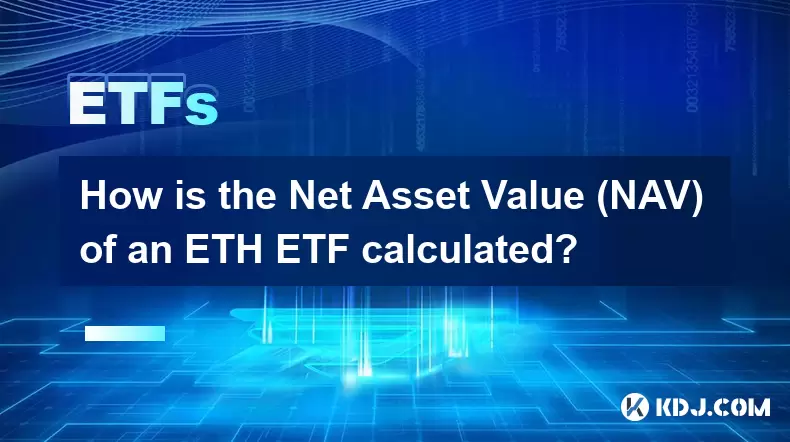
Understanding the Net Asset Value (NAV) of an ETH ETF
The Net Asset Value (NAV) is a fundamental metric used to evaluate the value of shares in an exchange-traded fund (ETF), including those that track Ethereum (ETH). In the context of an Ethereum ETF, the NAV represents the per-share value of the underlying assets held by the fund. Unlike traditional stock or bond ETFs, ETH ETFs typically hold actual Ether as their primary asset or derivative instruments tied to its price.
Key Point: The NAV of an ETH ETF is calculated daily based on the closing market value of the total assets minus liabilities, divided by the number of outstanding shares.
This calculation ensures that investors receive an accurate valuation of their holdings relative to the current market price of Ethereum.
Components Involved in NAV Calculation
Several components are essential for determining the NAV of an ETH ETF accurately:
- Ethereum Holdings: The quantity of ETH held directly by the ETF is a primary factor. These holdings are usually stored in secure digital wallets managed by custodians.
- Market Price of ETH: The NAV depends heavily on the real-time or closing price of Ethereum on major cryptocurrency exchanges. This price is often taken from a specific reference index or exchange to avoid manipulation.
- Total Liabilities: These include operational expenses, management fees, and any debts owed by the ETF. Accurate accounting of these costs ensures transparency in the NAV.
- Outstanding Shares: The total number of shares issued and currently held by investors affects the per-share NAV. As more shares are created or redeemed, the NAV adjusts accordingly.
Each component plays a critical role in maintaining the integrity and accuracy of the NAV calculation.
Daily Valuation Process
The valuation process for an ETH ETF’s NAV occurs at the end of each trading day. Here's how it unfolds:
- Asset Valuation: At the close of the trading day, the ETF’s custodian assesses the total amount of ETH held in custody. This includes any inflows or outflows due to investor activity during the day.
- Pricing Mechanism: The ETF provider uses a reliable pricing source—such as a composite of prices from multiple exchanges—to determine the fair market value of Ethereum.
- Liability Deduction: Total liabilities like management fees, administrative costs, and other expenses are subtracted from the total asset value.
- Share Count Adjustment: The adjusted net asset value is then divided by the number of shares outstanding to compute the per-share NAV.
This process ensures that the NAV remains transparent and reflective of the fund’s actual position at the end of each business day.
Impact of Custody and Security Measures
Since ETH ETFs deal with digital assets, the method of custody significantly impacts the reliability of NAV calculations. Institutional-grade custodians use cold storage solutions and multi-signature protocols to safeguard the underlying ETH. These security practices ensure that the assets remain intact and verifiable, which is crucial for accurate NAV reporting.
Important Note: Any loss or theft of ETH could directly affect the fund’s assets and, consequently, the calculated NAV. Therefore, robust security infrastructure is vital.
Additionally, periodic audits and third-party verification of holdings help maintain trust and ensure that the reported NAV aligns with the actual ETH reserves.
Transparency and Reporting Standards
To maintain investor confidence, ETF providers must adhere to strict transparency standards when disclosing NAV figures. Most ETH ETFs publish their NAV daily through official channels such as:
- Investor relations websites
- Regulatory filings
- Financial data platforms like Bloomberg or Morningstar
These reports often include details about the amount of ETH held, the valuation methodology used, and the breakdown of expenses. Such disclosures allow investors to verify the accuracy of the NAV and understand the factors influencing it.
Moreover, regulatory compliance ensures that all published NAV values are independently verified, reducing the risk of misrepresentation.
Frequently Asked Questions (FAQ)
Q: Can the NAV of an ETH ETF fluctuate intraday?
A: While the official NAV is calculated once daily, the market price of the ETF can fluctuate throughout the trading day due to supply and demand dynamics on the stock exchange. However, arbitrage mechanisms help keep the market price close to the NAV.
Q: Is the NAV affected if the ETF holds derivatives instead of physical ETH?
A: Yes, if the ETF uses futures contracts or other derivatives to gain exposure to ETH, the NAV will be influenced by the performance and pricing of these instruments, not just the spot price of Ethereum.
Q: How do ETFs handle ETH rewards or staking income?
A: Some ETH ETFs may participate in staking to earn additional ETH. These rewards are typically added to the fund’s assets and reflected in the NAV calculation, increasing the value over time.
Q: Who verifies the ETH holdings of an ETF?
A: Independent auditors and custodians regularly verify the actual ETH holdings of an ETF. Regulatory authorities also require periodic disclosures to ensure transparency and prevent fraud.
Disclaimer:info@kdj.com
The information provided is not trading advice. kdj.com does not assume any responsibility for any investments made based on the information provided in this article. Cryptocurrencies are highly volatile and it is highly recommended that you invest with caution after thorough research!
If you believe that the content used on this website infringes your copyright, please contact us immediately (info@kdj.com) and we will delete it promptly.
- BlockDAG, Jupiter, Aptos: Decoding the Hottest Crypto Plays
- 2025-07-18 23:10:13
- XRP, Bitcoin, and Price Predictions: Decoding the Crypto Crystal Ball
- 2025-07-18 23:10:13
- GENIUS Act Sparks $4 Trillion Crypto Market Surge: What's Next?
- 2025-07-18 23:50:13
- PM Modi, Rajendra Chola, and a Coin Release: A Historical Confluence
- 2025-07-18 23:50:13
- MBG Token's Gate.io Listing: A New Era for MultiBank Group
- 2025-07-18 23:55:14
- Dogecoin, Retail Payments, and Price Surges: What's the Hype?
- 2025-07-18 23:55:14
Related knowledge
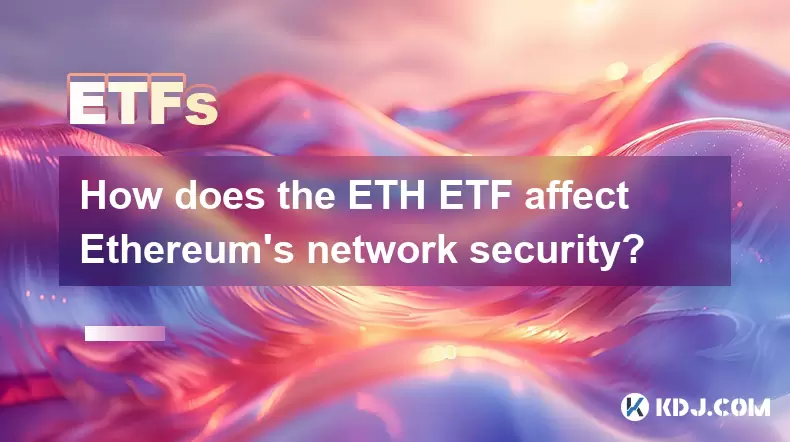
How does the ETH ETF affect Ethereum's network security?
Jul 17,2025 at 01:29pm
Understanding the ETH ETF ConceptAn Ethereum Exchange-Traded Fund (ETH ETF) is a financial product that allows investors to gain exposure to Ethereum ...
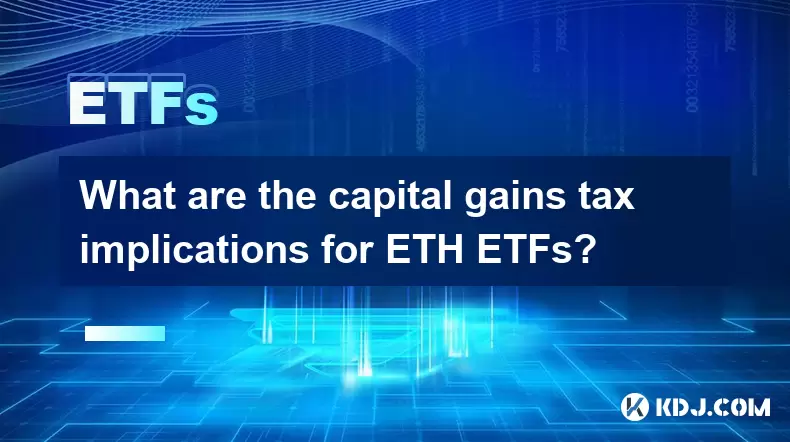
What are the capital gains tax implications for ETH ETFs?
Jul 18,2025 at 08:00am
Understanding Capital Gains Tax in Cryptocurrency InvestmentsCapital gains tax is a tax imposed on the profit realized from the sale of an asset that ...
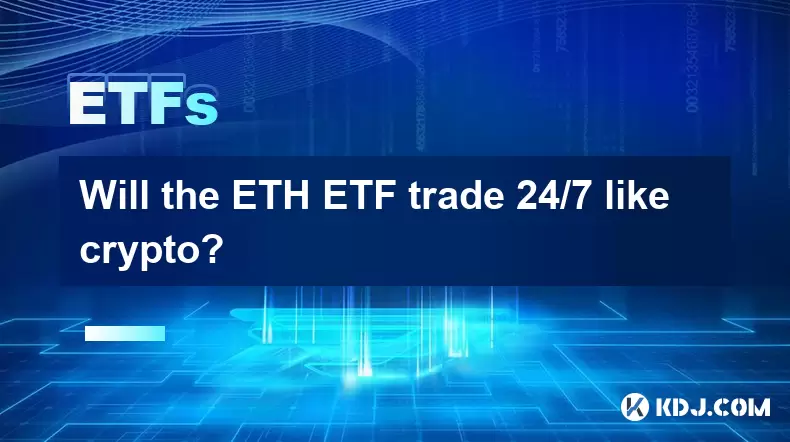
Will the ETH ETF trade 24/7 like crypto?
Jul 18,2025 at 10:00am
Understanding the ETH ETF and Its Trading HoursThe Ethereum Exchange-Traded Fund (ETH ETF) is a financial product that allows investors to gain exposu...
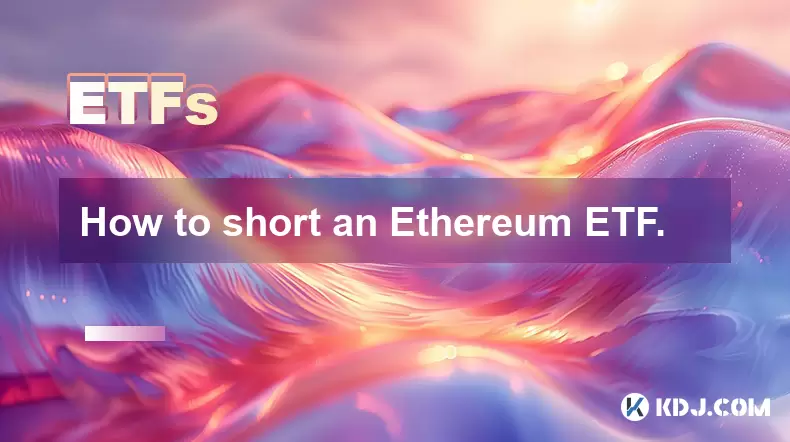
How to short an Ethereum ETF.
Jul 17,2025 at 05:43pm
Understanding the Concept of Shorting an Ethereum ETFShorting an Ethereum ETF involves betting against the price of Ethereum through a specific exchan...
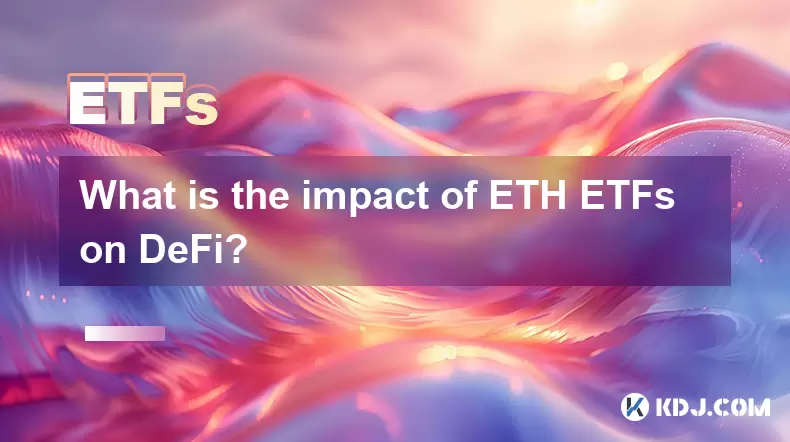
What is the impact of ETH ETFs on DeFi?
Jul 17,2025 at 11:07pm
Understanding ETH ETFs and Their Role in the Cryptocurrency MarketAn ETH ETF (Ethereum Exchange-Traded Fund) is a financial product that tracks the pr...
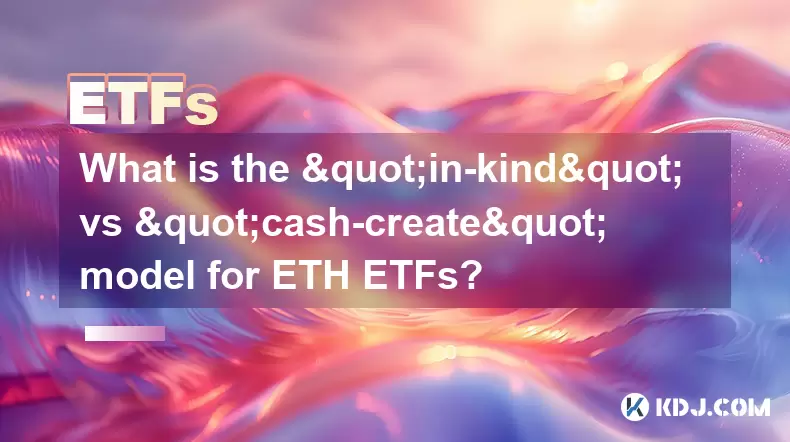
What is the "in-kind" vs "cash-create" model for ETH ETFs?
Jul 17,2025 at 04:35pm
Understanding the ETH ETF StructureExchange-traded funds (ETFs) for Ethereum (ETH) are structured to provide investors with exposure to ETH price move...

How does the ETH ETF affect Ethereum's network security?
Jul 17,2025 at 01:29pm
Understanding the ETH ETF ConceptAn Ethereum Exchange-Traded Fund (ETH ETF) is a financial product that allows investors to gain exposure to Ethereum ...

What are the capital gains tax implications for ETH ETFs?
Jul 18,2025 at 08:00am
Understanding Capital Gains Tax in Cryptocurrency InvestmentsCapital gains tax is a tax imposed on the profit realized from the sale of an asset that ...

Will the ETH ETF trade 24/7 like crypto?
Jul 18,2025 at 10:00am
Understanding the ETH ETF and Its Trading HoursThe Ethereum Exchange-Traded Fund (ETH ETF) is a financial product that allows investors to gain exposu...

How to short an Ethereum ETF.
Jul 17,2025 at 05:43pm
Understanding the Concept of Shorting an Ethereum ETFShorting an Ethereum ETF involves betting against the price of Ethereum through a specific exchan...

What is the impact of ETH ETFs on DeFi?
Jul 17,2025 at 11:07pm
Understanding ETH ETFs and Their Role in the Cryptocurrency MarketAn ETH ETF (Ethereum Exchange-Traded Fund) is a financial product that tracks the pr...

What is the "in-kind" vs "cash-create" model for ETH ETFs?
Jul 17,2025 at 04:35pm
Understanding the ETH ETF StructureExchange-traded funds (ETFs) for Ethereum (ETH) are structured to provide investors with exposure to ETH price move...
See all articles

























































































